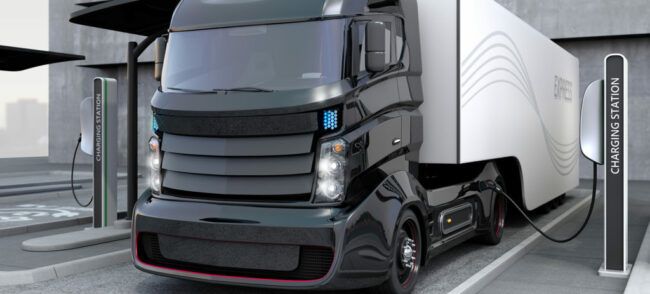Stay connected
Subscribe to our fleet blog and follow us on social media to receive all our fuel and energy industry insights.

To many people, the alternative fueling technology of the Toyota Prius stands out as the most innovative thing to happen in the motor vehicle industry in the last several decades. However, history tell us that electric hybrid cars have been available as far back as 1916, but because the dual power was more expensive and a lot less powerful, electricity gave way to gasoline. It wasn’t until 1966 when congress introduced a bill recommending the electric vehicle as a way to reduce air pollution, that the technology took off again, and the automotive industry continue to explore the efficiencies of the hybrid fueling technology into the 60s and 70s. With a $20 million investment in the electric car, GM was well on its way to producing hybrid vehicles in the mid to late 70s, but it was Audi who introduced the first generation of hybrid in 1989. As the vehicles became more popular and congress became more interest in initiatives to lower emissions, companies like Toyota became more focused on producing vehicles that could lower emission while improving fuel efficiency by as much as 50%. Those objectives set Toyota in motion to be the first and the best hybrid vehicle.
The Toyota Prius was Introduced to a Japanese market in 1997 and released to the world in 2001. With the name Prius, Latin for “to go before”, Toyota saw themselves as trailblazers, and although there were some hiccups along the way, they have done just that. They have set the standard. Currently the Toyota Prius is sold in more than 40 countries and is the best-selling hybrid vehicle in the U.S. starting a revolution in the way drivers are thinking about fuel and power.
Today there are dozens of brands to choose from including, Audi, Ford, Infinity, Lexus, Honda, Chevrolet, VW and of course, Tesla. The hybrid technology has been integrated into school busses across the country as well as commercial busses in an effort to contribute to more sustainable public transport with consideration to the environmental impact on greenhouse gasses by traditional diesel fuel. A report prepared by Purdue University suggests introducing more hybrid diesel-electric buses and a fuel containing 20% biodiesel could reduce greenhouse emissions and petroleum consumption even further. The data all indicates that hybrid fueling technology is here to stay and has even found its way into the trucking industry. Brands like BMW, Tesla and the popular semi manufacturer Kenworth are just a few of the brands getting on board.
Gizmodo.com describes the Kenworth T270 Class 6 hybrid-electric truck as featuring the Paccar PS-6 diesel engine with a motor/generator working with the transmission and a 340-volt battery to allow the truck to get help from electricity when traveling at speeds below 30MPH. These hybrid trucks will make a considerable impact on the environment as well as ease fuel management and improve fuel efficiencies of up to 30%.
When Congress enacted Public Law 94-413, the Electric and Hybrid Vehicle Research, Development, and Demonstration Act of 1976, their main objectives were to work with the automotive industry to improve components of vehicles including batteries, motors, controllers and other potential hybrid electric componentry. They might never have imagined that the work would lead to innovations touching almost every aspect of vehicles, including trucks with 18 wheels.
Green Fleet Magazine recently published an interview with a representative of BorgWarner, an American company distributing vehicle parts and components to the automotive industry world-wide. BorgWarner expects the hybrid and electric commercial market to see a “32.9% compound annual growth rate, increasing from 49,000 units in 2017 to 115,000 units in 2020.” The company already offers a broad and growing product portfolio to help meet emissions regulations and fuel economy standards, but as zero emissions restrictions are growing, they are experiencing even more urgency toward the endeavor.
“The growth drivers in commercial vehicle propulsion systems are changing. While environmental impact and fuel economy continue to be key concerns, truck and transit fleets are now confronted with new challenges from a growing list of urban areas where combustion engines are restricted due to zero-emissions zones and noise-sensitive areas,” said Christopher P. Thomas, chief technology officer, BorgWarner. “BorgWarner’s latest technologies will help bring new, cleaner hybrid and electric options to larger fleet vehicles.”
Walmart has been working tirelessly with their partners and vendors to increase efficiencies with their fleets. Some of these efficiencies include:
The company is also in the process of developing the Walmart Advanced Vehicle Experience (WAVE) concept truck. This prototype combines aerodynamics, a micro-turbine hybrid powertrain, electrification, advanced control systems, and lightweight materials like carbon fiber all in one vehicle. Innovations like these will not only increase efficiencies in fuel management, but nurture a rich experience for fleet drivers. While electric hybrid fueling technology is driving innovation for now, there is much more to come and an entire industry that is ready!
Resources:
Cerasis
http://www.hybridcars.com/history-of-hybrid-vehicles/
Subscribe to our fleet blog and follow us on social media to receive all our fuel and energy industry insights.